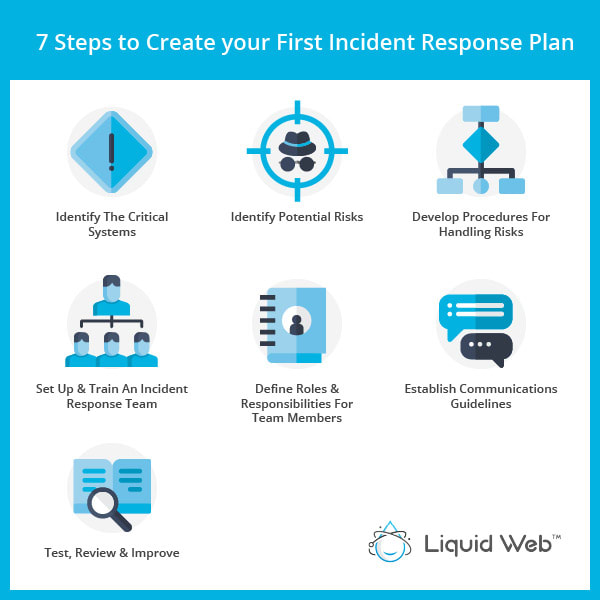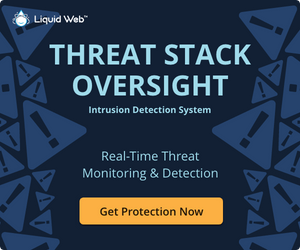10 Best Ways To Mitigate Cybersecurity Risks
The world has experienced a constant growth of online activity as our everyday technology has evolved. But this growth rate accelerated in 2020 due to the pandemic – forcing people online to maintain personal and business activities in the face of physical lockdowns. An unfortunate side effect of this increased online activity was a corresponding increase in cyberattacks targeted at the new wave of digital dependents with little understanding of threat mitigation and the security risks they faced.
Since then, the spike in common security threats like malicious emails, ransomware attacks, and vulnerability exploits on critical IT infrastructure continues to rise. It has become clear that most organizations are unprepared to respond to a cyberattack.
Newer technologies like cryptocurrencies, the Internet of Things (IoT), and Artificial Intelligence/Machine Learning (AI/ML) are approaching widespread adoption, expanding the scope of security risks to contend with. One of the best ways companies can defend themselves in this new, fast-paced environment is by getting educated on how to mitigate threats to their digital infrastructure.
What Is Cybersecurity Threat Mitigation?
Cybersecurity threat mitigation (sometimes known simply as threat mitigation) is the collection of strategies, tools, and workflows organizations use to minimize or eliminate digital threats to mission-critical company data or their networks. The overall process breaks down into three distinct stages:
- Prevention — This stage of security mitigation focuses on identifying and improving a company’s current security weaknesses. Prevention strategies are a more proactive approach, as opposed to reacting to threats after they’ve already occurred.
- Detection — Detection focuses on identifying cyber threats as quickly as possible before they can cause significant system damage. Detection is only part of the security risk mitigation process. It must be used in conjunction with other mitigation strategies to ensure threats are not only identified but dealt with as swiftly as possible.
- Remediation — This is the response stage of threat mitigation and typically involves isolating, repairing, or resolving cyber threats before they can adversely impact digital infrastructure or data.
Why Is Cybersecurity Threat Mitigation Important?
Cybercriminals are constantly evolving the strategies they use to infiltrate company networks. Implementing proper threat mitigation procedures allows you to stay ahead of the curve, identifying and remediating cyber threats before they cause irreparable damage to your business.
It’s important to note that as good as your cybersecurity can be, no network is 100% protected. When it comes to businesses experiencing cyberattacks, it’s not a matter of if. It’s a matter of when. Proper threat mitigation protocols will enable you to quickly identify and remediate any threats that slip through the cracks and reduce their risk to your infrastructure.
Types of Cybersecurity Threats
Part of thorough cybersecurity threat mitigation is education. Quickly identifying and resolving cyberattacks requires knowing the most popular attack methods today’s digital threat actors employ. Below are some attacks you and your organization should be aware of.
Malware Attacks
Malware attacks are downloadable or executable files that install malicious software on the subject computer. Hackers use this software to gain access to your company’s network. Once inside, they can access various types of sensitive company data like login credentials, financial information, and proprietary information.
These cyber threats typically come as a file attachment or suspicious link. It’s important to give your team training on identifying these files and the proper procedure for handling them.
Phishing Attacks
Phishing attacks are cyber threats that come via email. A hacker may send an email posing as an authority figure, government agency, or other trusted source. These digital threat actors are very good at making their emails look real. By using this deception, they can trick end users within your organization into forfeiting sensitive information. Phishing attacks give cybercriminals access to login credentials, user data, and even credit card numbers.
Data Breaches
Data is one of the most valuable assets any business owns. If it falls into the wrong hands, digital threat actors could cause severe damage to a company’s reputation as well as astronomical financial damages.
Modern devices and businesses thrive on connectivity. The Internet of Things (IoT) ensures easy data access across devices. That increased access requires larger, more intricate networks. As a result, there’s more opportunity for data to be leaked or hackers to infiltrate.
Denial-of-Service Attacks
Denial-of-service attacks are when hackers flood a network with traffic until the system crashes. Once the network crashes, actual users are denied access to the information or services the company normally provides. Ultimately, this causes severe reputational and financial damage.
Ransomware Attacks
Ransomware involves a hacker infiltrating the network and then holding the organization hostage, denying access to their critical files. The cybercriminal sets a ransom that they must receive to allow the company access again.
The infectious file is usually encrypted, making it nearly impossible for organizations to remove it manually. Once the hacker gets their ransom, they provide the decryption key to remove the file.
10 Ways To Mitigate Security Risks and Threats
In light of the evolving threat landscape, here are 10 steps that should be a part of your security risk mitigation strategy for keeping your organization safe:
1. Conduct a Cybersecurity Risk Assessment
Perform a cybersecurity risk assessment to identify the threats your organization faces, how likely they are to occur, and what kind of damage they can cause. The risk assessment results will determine your organization’s readiness to respond to security events and uncover your infrastructure’s vulnerabilities to common attacks like phishing, malware, brute-force attacks, and ransomware.
How to mitigate security risk: Any cybersecurity risk assessment should include the following five steps:
- Scoping — Decide whether the assessment should encompass the entire infrastructure or just some vital systems.
- Identification — Identify all digital and physical assets and the possible threats to each asset.
- Analysis — Analyze each threat to determine the likelihood of occurrence and the impact on your organization.
- Evaluation — Using the results of your analysis, choose the best course of action for each risk. You can either avoid, transfer, or mitigate risk.
- Documentation —Create a risk register to document all identified risks and their cybersecurity risk mitigation steps, and review it regularly to update the contents.
2. Create an Incident Response (IR) Plan
An incident response (IR) plan is a documented set of tools and instructions put together to help your team quickly identify, deal with, and recover from cybersecurity threats. For instance, if a security breach occurs, an effective IR plan ensures you have the right people, processes, and technologies to resolve the issue and minimize damage. An IR plan is especially useful in protecting against data breaches, ransomware, denial-of-service attacks, malware, and other attacks designed to compromise a system's operation.

How to mitigate security risk: Creating a proper incident response plan involves these seven steps:
- Identify the critical systems — Identify the most critical systems to your business operations.
- Identify potential risks — Identify the threats and risks to your critical systems.
- Develop procedures for handling risks — Develop cybersecurity risk mitigation strategies for these identified risks.
- Define roles and responsibilities for the incident response (IR) team — Define specific roles for all IR team members around your incident response plan activities.
- Set up and train IR team members — Inform and train respective team members of their role's requirements.
- Establish communications guidelines — Establish protocols for relaying information between IR team members, other staff, and external stakeholders.
- Test, review, and improve — Regularly test your incident response plan and refine it based on the results.
3. Train Your Team
A study by Tessian has shown that human error is responsible for 85% of data breaches that have occurred. The best way to reduce the likelihood of your team becoming a security risk is to train them regularly. This training should include not just your cybersecurity or IT staff but all team members, as any of them can become a weak point in your operations. You can mitigate security threats from social engineering attacks, such as phishing and scam emails, when properly trained.
How to mitigate security risk: Here are a few key points to consider when implementing a security awareness training program for your team:
- Include cybersecurity in onboarding — Include cybersecurity training in your onboarding process for new team members.
- Regular training for staff — Require all staff to attend refresher training programs regularly.
- Effective training content — The content of your training program should raise awareness on how to identify and respond to the security threats your organization faces.
- Live-fire drills — Engage employees in live-fire drills to practice the skills they learn.
- Management buy-in — Get the buy-in of management-level staff to increase adoption.
- Update curriculum — Constantly update your learning curriculum to include new threats and cybersecurity risk mitigation strategies for these threats.
4. Monitor and Protect Your Network Traffic
Poor network security can lead to all sorts of nightmare scenarios, so mitigating security threats in your network should involve constantly monitoring your network traffic for intrusion attempts. This monitoring applies to both outbound and inbound traffic, as it's possible for rogue employees to leak sensitive information from within your network. With properly configured firewalls and threat intelligence systems, you can proactively detect malware, Denial-of-Service attacks, botnets, and man-in-the-middle attacks, stopping them before they do any damage.
How to mitigate security risk: Ensure your network includes a firewall configured only to allow traffic needed for your operations. Allow only administrators to have access to this firewall, and be sure to enable logging of all network and administrative activity on it. Pair your firewall with a VPN to encrypt connections between remote locations.
5. Enforce the Use of Strong Passwords
Passwords are used to confirm identity and control access to restricted resources or information. Therefore, the stronger your password systems are, the lower your risk of unauthorized access to sensitive data from weak or stolen credentials, man-in-the-middle attacks, phishing emails, and brute-force attacks.
How to mitigate security risk: Introduce a strong password policy requiring minimum password length and complexity for all accounts and two-factor authentication where possible. Your password policy should also include scheduled password changes and account lockouts after repeated login failures. In addition, introduce using password managers to prevent people from storing passwords insecurely.
6. Install Security Patches and Updates
The vendors responsible for operating systems, antiviruses, and other widely used software constantly release product updates. Whether they add new features or mitigate security threats, these updates are essential to the continued use of these applications. Installing these updates can protect you from newly discovered viruses, malware, and third-party vulnerabilities.
How to mitigate security risk: Automate the updates for antivirus and malware programs to ensure they receive their definitions on time. In addition, schedule critical security patches for operating systems to install when available. Finally, for more sensitive systems, be sure to run updates on test instances before deploying them to your live environment.
7. Encrypt and Backup Your Data
Backups are critical to ensuring business continuity after a crisis. Encryption adds another layer of security for your backups, protecting your sensitive information from unauthorized access. With these cybersecurity risk mitigation strategies in place, you can easily prevent data loss from ransomware attacks, data breaches, or human error.

How to mitigate security risk: Include the following encryption and backup best practices in your plan :
- Remote storage — Use remote storage for your backups.
- Backup frequency — Schedule backups to happen frequently.
- Data retention schedule — Create a schedule for data retention to manage how long you keep your backup files.
- RAID for data storage — Store your backups in RAID arrays for improved performance and redundancy. However, RAID arrays should not be used as a primary backup solution.
- Multiple backups — Use multiple backup solutions for improved backup recovery options during a disaster.
8. Don’t Neglect Physical Security
For organizations that host their IT infrastructure, the security of these physical hosting locations is just as important as their digital security. By improving your physical security as part of your cybersecurity risk mitigation strategy, you can reduce the risk of social engineering attacks, physical theft, and disgruntled employees looking to cause chaos.
How to mitigate security risk: A few steps to enhance physical security include:
- Restrict permissions and log activity — Restrict server access to only administrators and log all server activity.
- Use security cameras and doors — Install cameras and security doors in locations that handle sensitive information.
- Disable physical ports — Disable physical ports on servers and prevent unsecured devices from accessing your network.
- Equipment security training — Train your staff to be security-conscious with their equipment, including devices that fall under a bring your own device policy.
- Stolen/missing device policy — Establish procedures for disabling stolen/missing devices.
9. Monitor Your Vendors
Chances are your organization uses some products or services from an external vendor for its operations. Therefore, the security posture of these organizations can impact your company's cybersecurity readiness, especially if their services play a critical role in your operations. Third-party vulnerabilities are a common attack vector for hackers who target popular software systems.
How to mitigate security risk: To reduce your exposure to these kinds of attacks, you should set a minimum standard for security that vendors must meet and monitor for compliance. Also, be sure that they meet the legal regulations for your industry before you proceed. Finally, always have backups of your data and redundancy plans in case of a system failure on their end.
10. Be Compliant With Industry Regulations
Regulatory agencies for various industries understand the vital role cybersecurity plays in helping their sectors thrive in today's world. That is why they enforce strict compliance with their information security regulations for their stakeholders. A good example is the Payment Card Industry Data Security Standard (PCI DSS), which provides cybersecurity risk mitigation strategies to prevent credit card fraud and unauthorized access to sensitive data.
How to mitigate security risk: Identify the cybersecurity regulations required for your industry and review the compliance requirements to see what steps you should take to reach full compliance. Take note of any actions involving external auditors' validation to confirm compliance.
How Liquid Web Can Help With Security
The steps outlined above are a great starting point for building your threat mitigation infrastructure. However, if you want to stay ahead of new and emerging threats from malicious actors, your cybersecurity risk mitigation strategies must be adaptable.
With decades of experience building and hosting secure infrastructure, Liquid Web can provide the infrastructure and security expertise that reduces your exposure to old and new cybersecurity threats.
Threat Mitigation FAQs
How can I tell if I am a target for a cybersecurity threat?
+What should I do if I think I have been the victim of a cybersecurity attack?
+Related Resources

Marho Atumu
Marho is a Community Support agent at The Events Calendar and enjoys helping people discover how information technology can provide great solutions to their everyday problems. His career in IT can clearly be traced to his love for all things science fiction.
Keep up to date with the latest Hosting news.



